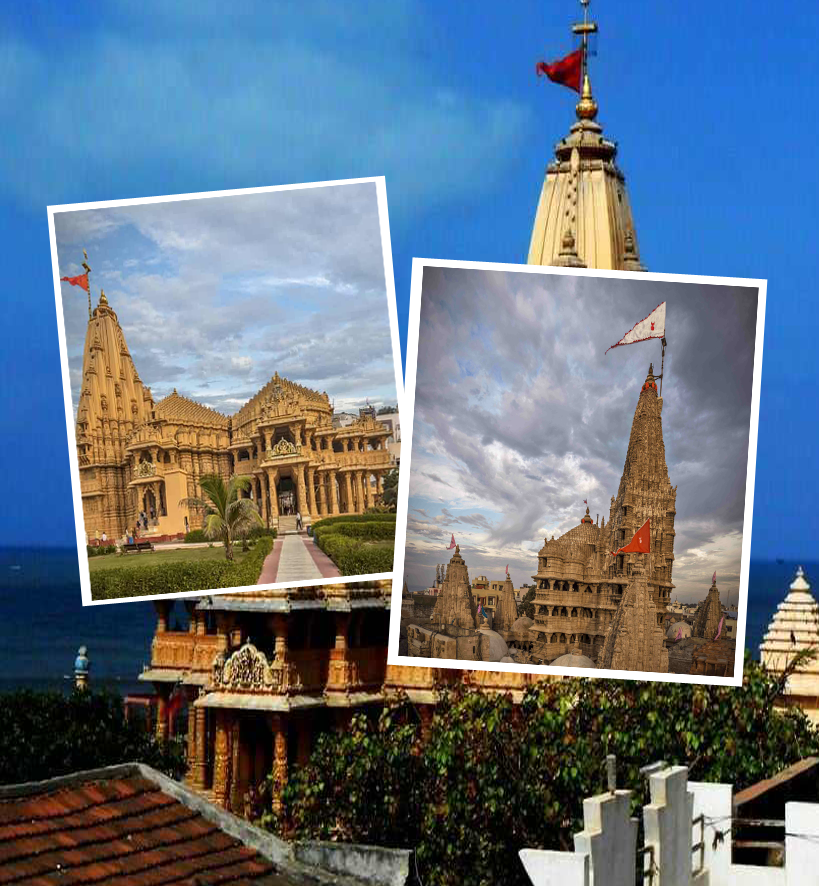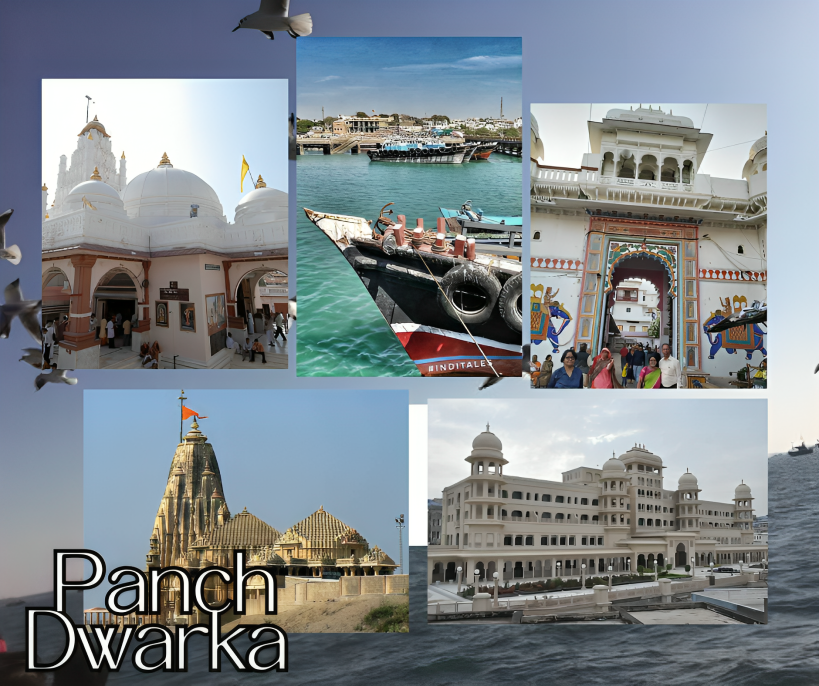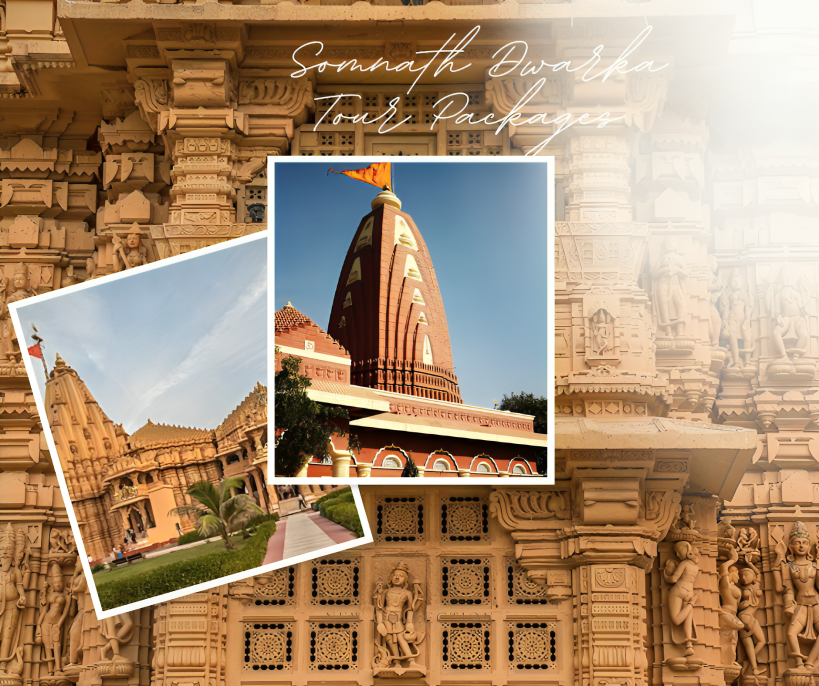Nageshwar Temple is an ancient and significant temple dedicated to Lord Shiva, located in the Dwarka region of Gujarat, India. It is one of the twelve Jyotirlingas of Lord Shiva, making it one of the holiest pilgrimage sites for devotees of Lord Shiva. The temple is known for its distinct architectural style, rich cultural history, and spiritual significance.
Architecture Nageshwar Temple
Nageshwar Temple in Dwarka conserves a Jyotirlinga that is devoted to Lord Shiva. This holy site holds mythological significance, drawing worshipers from far and wide. People worship the deity Nageshwar in the Shiva Linga form, said to be Swayambhu or self-originated. The Architecture Nageshwar Temple creates a spiritual and serene ambience, offering an idyllic space for the devotees to make connection with the divine.
The underground sanctum of the temple is where the Shiva Linga is worshipped. This unique aspect makes the difference, adding mystique to the surroundings. It is a must-visit destination for individuals seeking spiritual trip or people enchanted by the rich Hindu cultural tapestry.
The architecture Nageshwar temple has a unique embodiment. Its design features reflect the temple’s spiritual gravity. Nageshwar temple is designed exclusively following old Vastu Shastra principles. The architecture, on the other hand, is influenced by the western style of temple. Since, the temple is west facing, devotees offering their prayers to Lord Shiva in front of the sacred Shiva Linga, faces the Sun automatically.
The planning of Nageshwar temple was based on the Sayanam posture of the human body. It consists of several parts including Mahadwar, the entrance porch, Sabha Mandapa (prayer halls), Antarala, and Garbha Griha (inner sanctum).
• Mahadwar is considered the feet of the body which means the entry happens through the feet
• There are two holy idols of Ganesha and Hanuman and in between the entrance porch is made. This part is considered the hands of the human body
• Sabha Mandapa consists of prayer seats and considered as the chest and abdomen of the human body
• Antarala is Nandi’s worship place
• In Garbha Griha the sacred Shiva Linga is established which is considered as the head of the body
A visit to this temple will be captivating due to its beautiful arches, lotus themed capitals, flute shaped columns, and Hindu traditional signage including Swastika and Kalash are scattered all over the temple. The construction of the temple was planned considering the weather of the area. Reinforced Concrete Cement is used to build the temple and it has a huge raft style foundation.
In festivals like Maha Shivaratri, the Nageshwar temple observes a flood of visitors which creates a warm atmosphere of devotion. The Arabian Sea near the temple doubles its scenic appeal, providing a vivid canvas for spiritual cogitation. Nageshwar temple remains as a witness of the lasting conviction and cultural tradition that draws people to this holy place.
Contact us for the best Gujarat Trips, and make your vacation a memorable one.
Frequently Asked Questions
-
What is Nageshwar Temple known for?
-
What is the architectural style of Nageshwar Temple?
The architecture of Nageshwar Temple follows a traditional Hindu temple design with influences from the Gujarat architectural style. The temple features a combination of intricate carvings, sculptures, and pyramidal spires, characteristic of many temples in the region. The shikhara (tower) above the sanctum is elegantly designed and houses the Jyotirlinga, which is the main object of worship in the temple.
-
What is the significance of the Jyotirlinga at Nageshwar Temple?
The Jyotirlinga at Nageshwar Temple is a sacred representation of Lord Shiva and is one of the twelve Jyotirlingas across India, considered to be self-manifested. The linga is believed to emit divine light, symbolizing the presence of Lord Shiva in the temple. Pilgrims visit the temple to worship the Jyotirlinga and seek the blessings of Lord Shiva.
-
Is there any influence of local architectural styles in the Nageshwar Temple?
Yes, the architecture of Nageshwar Temple showcases local Gujarati architectural styles, especially in its use of ornate carvings and pyramid-shaped spires. The temple’s design is also influenced by the Sompura Salats (traditional Gujarati temple builders), whose craftsmanship is reflected in the detailed sculptures and intricate designs seen throughout the temple.
-
Are there any unique elements in the temple’s design?
One of the unique elements of Nageshwar Temple is the presence of the Jyotirlinga in a circular dome, which is not very common in many other temples. The Nandi (bull, Lord Shiva’s vehicle) is also placed near the temple’s entrance, offering devotees a chance to pay respects. The pillared hall and the grand entrance gate with large arches and carvings are other striking features that add to the temple’s grandeur.


















